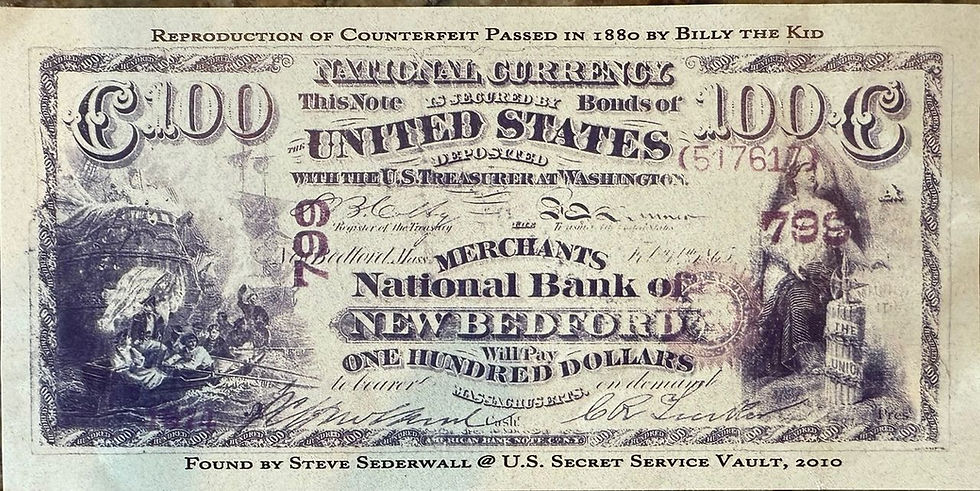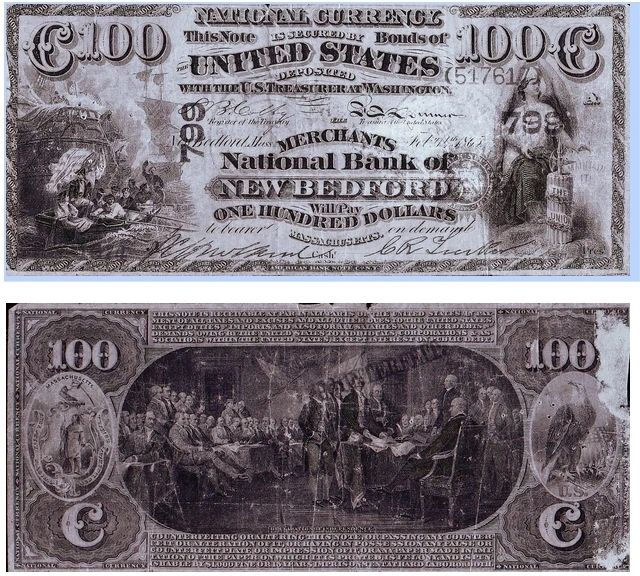“The Fictional Sombrero with the Green Band”
- jeremiahslatten
- Jul 9, 2024
- 3 min read
Updated: Sep 24
by Ben Doss
One of the significant challenges in studying the history of Billy the Kid is differentiating between fact and the abundance of fiction and folklore that surrounds him. A key event often discussed is Billy's capture at Stinking Springs, where Charlie Bowdre, a member of Billy's gang, emerged from a stone cabin wearing an outfit that closely matched the description of what Billy was wearing. This detail led to Bowdre being shot by Pat Garrett and his posse. The hat in question was described as a sugarloaf sombrero with a green band. Interestingly, Pat Garrett's book does not mention such a sombrero, or any sombrero for that matter. As the original source of information, if it didn't come from Garrett or the fictionalized accounts by Ash Upson, where did it come from?
In Garrett's book "The Authentic Life of Billy the Kid," he mentioned having a detailed description of Billy's attire, particularly his hat. He stated that he firmly believed the man appearing at the entrance with a nose bag in his hand was Billy the Kid. The size, dress, and hat matched the description perfectly, and it was at that moment that Garrett and his men raised their guns and fired.
In 1988, the book "The Capture of Billy the Kid" presented new eyewitness accounts from members of Garrett's posse who were involved in the Stinking Springs capture, such as Cal Polk and Louis "The Animal" Bousman. Neither of them corroborated the existence of a sombrero with a green band. Another account came from Jim East, described in a letter to Charlie Siringo, which also made no mention of a hat.

In 2011, a firsthand account by another posse member, Frank Clifford (John Menham Wightman), became available in the book "Deep Trails in the Old West: A Frontier Memoir." According to Clifford, a posse member named Lon Chambers gave him the hat worn by Billy at the Stinking Springs capture. The description provided by Clifford was of a wide-brimmed, light-colored felt hat with an artistically braided band around the crown.
During Billy's temporary incarceration in Las Vegas, reporters from the Gazette and the Daily Optic conducted interviews with the new sheriff and the outlaws. The Gazette report from December 27, 1880, mentioned that Charlie Bowdre was mistaken for Billy as he stepped out of the door, wearing a hat similar to the one Billy had often been seen wearing. However, the report from the Las Vegas Daily Optic made no mention of the hat.
An article republished in the Ruidoso News in 1952, originally from the Lincoln Leader in 1881, expressed a romanticized description of Billy wearing a broad-brimmed sombrero with a bright green Irish band. However, this seems to be fictional embellishment rather than factual evidence.
It is important to note that the concept of Billy wearing a sombrero likely originated from the early chapters of the "Authentic Life," which was known for its dime-novel sensationalism. The book portrayed Billy as a reckless and murderous figure, perpetuating myths that have persisted over time. In the words of historian Frederick Nolan, "Their Authentic Life has been responsible for every single one of the myths perpetuated about Billy the Kid." It appears that the legend often overshadows the actual facts.
Sources: “The Capture of Billy the Kid,” edited by James H. Earle
Pat Garrett, “The Authentic Life of Billy the Kid: An Annotated Edition with Notes and Commentary by Frederick Nolan”
Las Vegas Gazette, December 27, 1880
Las Vegas Daily Optic, December 27, 1880
Frank Clifford, “Deep Trails in the Old West: A Frontier Memoir,” edited by Frederick Nolan
Ruidoso News, August 1, 1952




Comments